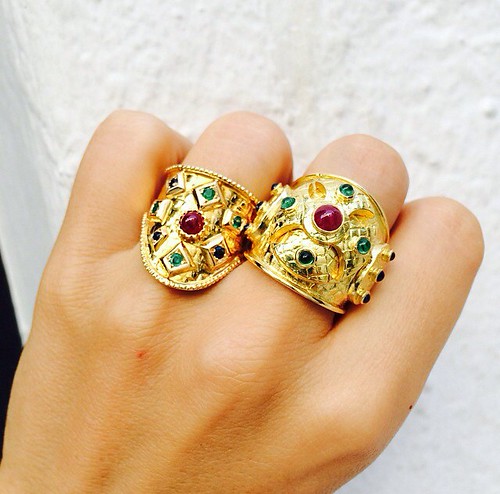

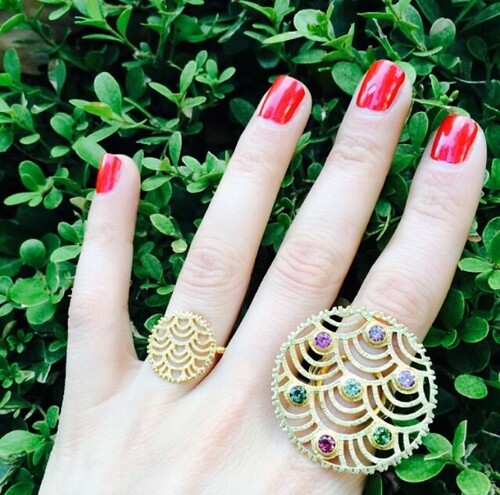
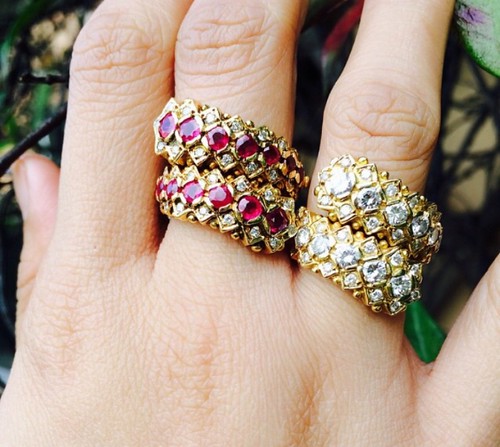
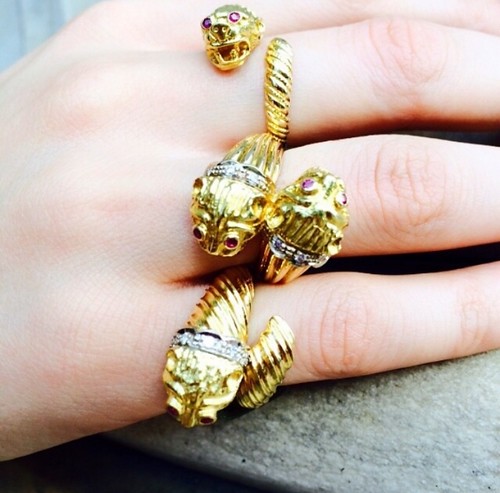
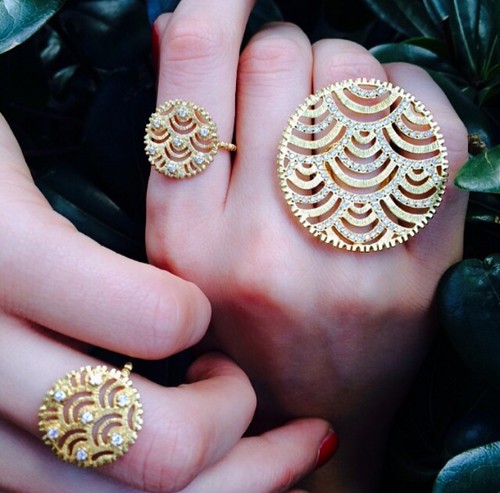
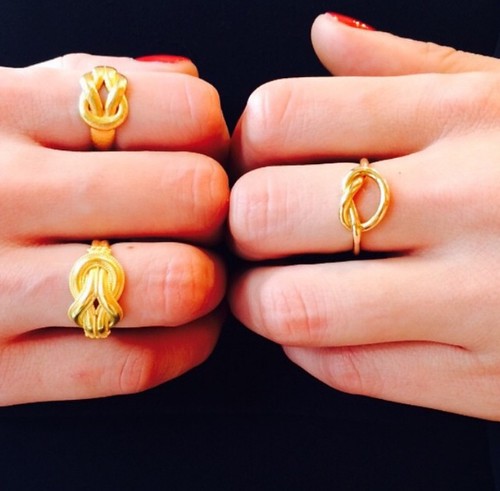
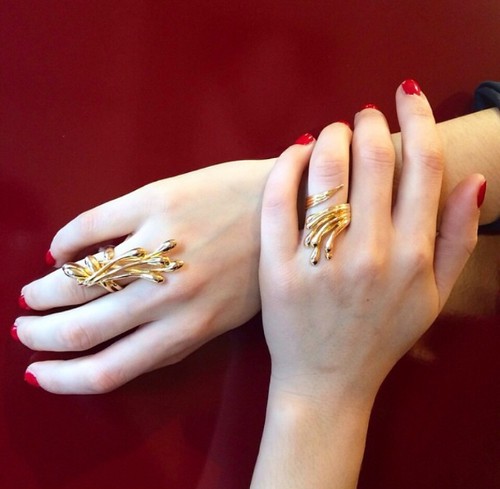
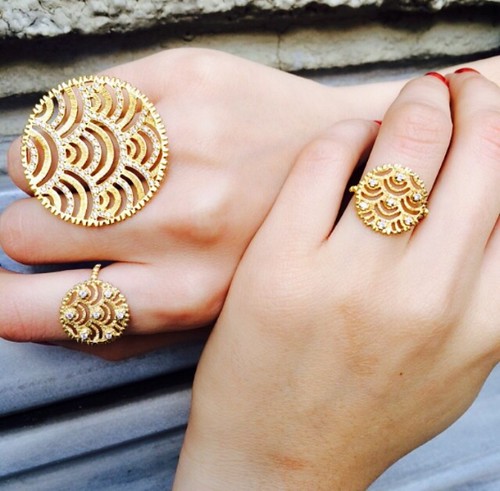
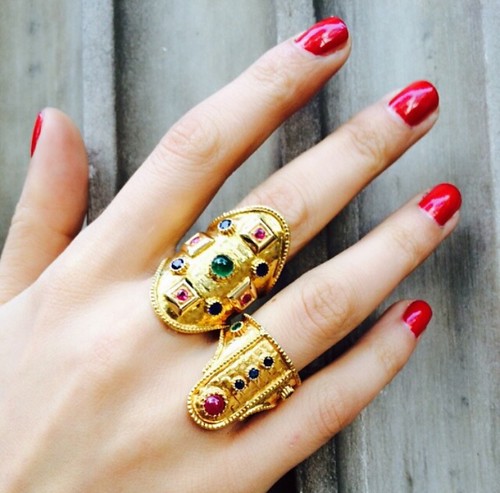
My fascination with Greek gold and the picturesque country of Greece is even stronger after doing some research on one of my most favorite Greek designers, Ilias Lalaounis. His career started in the late 1950s with his first collection called, The Archeological Collection, which was inspired by Classical & Hellenistic art and architecture. He created his own niche, mostly using all gold (18k & 22k) within his designs, while others used an abundance of gemstones. Lalaounis was also known for being quite the academian. He would spend hours researching topics like nature, science, animal and plant cells, constellations, and even biosymbols…these topics were then translated into jewelry and captivated jewelry enthusiasts around the globe.
At the height of his career, Ilias Lalaounis was an expert at the artistic techniques of hand hammering, granulation, hand weaving, repoussé, and filigree. Each technique is still used in many designs today from his brand, which is now in the hands of his four beautiful daughters–Aikaterini, Demetra, Maria, and Ioanna. He has created over 17,000 pieces of jewelry in his career, with over 50 different collections. To learn more about each collection, head over to the main website and click on Collections–it will take you through each name, chronologically!
That leads anyone to say, “his designs belong in a museum!” Well, he has his own museum–the Ilias Lalaounis Museum, founded in 1993 and open to the public–located in Athens, Greece. The museum holds over 4,000 pieces from Lalaounis’ collection. Would love to visit someday!
Five artistic techniques of Lalaounis:
Hand-hammering: this ancient technique which involves tiny hammers with multiple strikes was revived during the 1960s by Lalaounis. This technique takes a lot of time, creating subtle indentations and producing an overall hammered finish. Best done on 22k gold.
Granulation: this technique uses teeny tiny beads of gold, and fuses them onto a surface of jewelry, creating a pattern. Dating back to the third millennium BC, each gold grain no bigger than a millimeter is individually created and placed onto the jewelry surface. Lots of concentration and patience is needed for this, but the overall outcome is beautiful!
Hand Weaving: mainly regarding chains and necklaces, this technique dates back to the Hellenistic period, and is used to create multiple types of chain. Gold wire made up of uniform links are combined by hand to form a chain of gold–based on the technique used, different patterns and styles can be made. Some incredible necklaces were created by Lalaounis using hand weaving, especially during the 1960s.
Repoussé: means “to push back” …this technique takes the reverse surface of a piece of jewelry in gold and is hammered to create a relief design. Dating back to the Bronze Age, the finished look is a raised design and is very sculptural in appearance.
Filigree: there are two types of filigree–the first kind is open filigree, mostly associated with 1920s jewelry, and then there’s surface filigree, where wire is twisted, curled and shaped, and placed on top of the jewelry surface. Lalaounis excelled at surface filigree and really made it a staple of his design elements.
This post was brought to you in collaboration with LoveGold


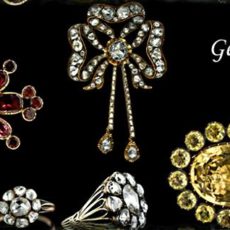
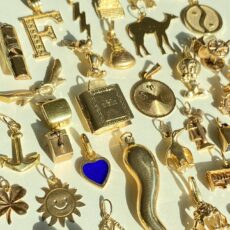
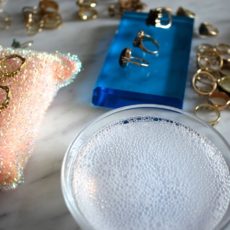



persjewel December 20, 2014 at 2:29 am:
I am so fond on rings and I also have collection of rings. really, those greek style rings made of gold are stunning.
Bijuterii December 20, 2014 at 10:39 pm:
Beautiful collection, I love gold rings.And the beauty is they come in pairs 🙂
Betty Grant December 26, 2014 at 1:25 pm:
I love jewelleries. Every women loves to wear jewellery and they treat it as their best friend. I have a huge collection of jewelleries and clothing. View site to see awesome collection.